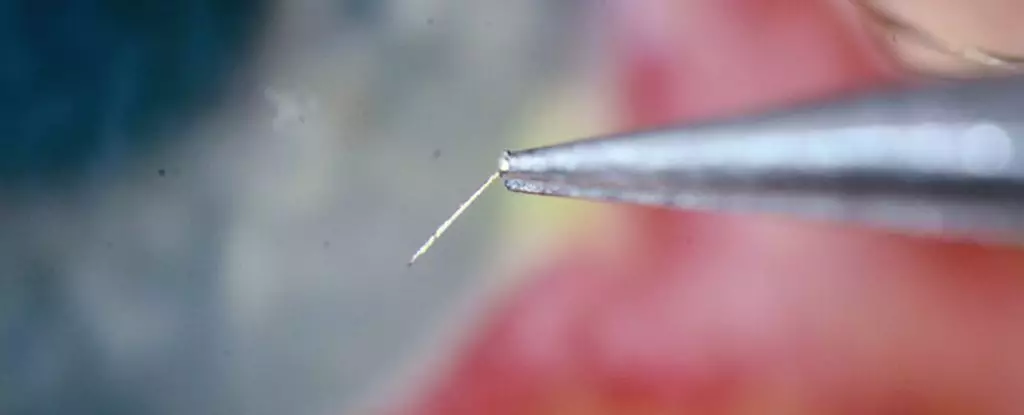Getting stung by a bee is already a painful experience, but imagine getting stung right in the eyeball. A 55-year-old man from Philadelphia faced this unfortunate situation when a bee stinger became lodged in his right eye. The man initially sought help at an emergency department, but little did he know that the situation would escalate into a more serious issue.
After the unsuccessful attempt to remove the bee stinger from his eye, the man started experiencing severe pain and vision problems. The vessels in his iris began to bleed, and his vision deteriorated rapidly. He could barely see out of his injured eye and could only count his fingers when shutting his uninjured eye. Realizing the severity of the situation, the man decided to visit an ophthalmology clinic for further examination.
Specialists at the clinic used fluorescent dye to identify the exact location of the bee stinger in the man’s eye. Under a specialized microscope, they found the tiny foreign object embedded between the iris and the sclera, causing inflammation and swelling in the eye. Photos of the injured eyeball revealed the extent of the damage and the complexity of the situation.
Using jeweler’s forceps, ophthalmologists were able to carefully remove the remaining bee stinger from the man’s eye. The patient was then prescribed eyedrops containing antibacterial medicine and steroids to reduce inflammation and promote healing. Five months after the incident, the man’s vision had significantly improved to almost perfect 20/25.
Ophthalmologists from Wills Eye Hospital emphasize the importance of seeking immediate medical attention for ocular bee stings. The barbed stingers of bees and wasps can cause significant damage to the eye, leading to inflammation and potential infection. It is crucial to have a specialist assess the situation and recommend the best course of treatment to prevent further complications.
While removing the bee stinger can alleviate symptoms and prevent complications, it is not always necessary or recommended. In some cases, leaving the stinger in place may be the safer option, especially if its removal poses a risk of additional damage. Ophthalmologists carefully evaluate each situation to determine the best approach for the patient’s recovery and long-term eye health.
The case of a bee sting in the eye serves as a reminder of the potential risks associated with these seemingly harmless insects. Seeking prompt medical attention and following the recommended treatment plan are crucial steps in ensuring a successful recovery and preserving vision. It is essential to prioritize eye safety and take precautions to avoid such incidents in the future.


Leave a Reply